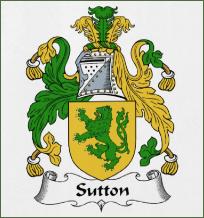 |
||||
Sutton Springs in York County
and Families Involved
When Jonathan Sutton 4 and his first wife Mary (“Polly”) Irvin Sutton, moved to York County from the Camden area they made their home Sutton Springs. This was a 1500 acre plantation located in the area of Sutton Springs Road in York, S.C.. This farm became a quite famous social and political gathering area where campaigning presidents often gave stump speeches. Historical reference and writings of this farm are many and include the following information.
“Sutton Springs in York County was the name of the mineral spring and plantation of Captain Jonathan Sutton and his family. Captain Sutton was an officer of the Continental Line. The Suttons may have acquired their family name from a place name , but they certainly left the surname as a place named in many locations where they later lived. Sutton, Massachusetts, Sutton Place in New York City, and Sutton Springs in South Carolina are all named for members of this particular family. While Sutton Springs was by far the least significant of those named above, it does have some interesting history.
The mineral spring is located a matter of eight to ten feet from the waters of Turkey Creek and only two or three miles outside of the old town of Yorkville, now York. It was to the little county court house town of Yorkville that Jonathan and his bride Polly ruin moved from Camden. Polly had grown to womanhood in an affluent environment. Her stepfather was a rather well-to-do small planter who is listed with 17 slaves in the 1790 census. Only a dozen planters in the county had more than he at the time. In nearby Richland there is another listing of Sutton and Gibson for an additional 14 slaves. This is the only Sutton listed for that county and is apparently a business partnership of some sort, possible or probably owned by Jasper Sutton of adjacent Camden District.
Jasper Sutton’s brother in law, Captain John Chestnut, was by far the largest planter of the Camden District with 135 salves. Polly Irvin Sutton, according to the Equity Records in York County, “was principally raised by her Uncle John Chestnut” after the death of her mother. Polly Irvin Sutton’s full brother, Alexander ruin of Camden died a young man as had their father. His daughter, Margaret Irvin, married Adam Fowler Brisbane. Brisbane is listed in that same census of 1790 as owning 76 slaves which made him the second largest planter in the district to Captain Chestnut and the owner of six more slaves than the illustrious Joseph Kershaw, who gave his name to the county. Alexander Irvin’s widow Mary, afterwards married Nicholas Peay of Fairfield County. The Peay family was the largest planter family in Fairfield County and their greatest plantation house, Melrose, in the Long Town section, was the most elegant plantation manor ever built in that county. It was complete with running hot and cold water and a pool for fresh fish built onto its roof garden. Melrose was burned by Sherman as he passed through Fairfield in 1865. Nicholas Peay’s estate was the largest ever recorded in Fairfield at the time of his death in the war years of the 1860’s.
George Washington visited Camden on his Southern tour. He was entertained with a dinner and ball at the home of Captain Chestnut. The next day he stopped for a meal at the home of Jasper Sutton which was at Grannies Quarter Creek.
In the South Carolina Revolutionary War pension records are several testimonies given to support Jonathan’s widow’s pension. He is described as one of the county’s most distinguished and honorable men and a leading patriot of his day. According to the testimony of one Philip Williams, “on one occasion when General Washington was reviewing the line, he complimented Sutton’s fine appearance to his staff and the good order of his company of which he was then the Orderly Sergeant and Clerk and often boasted that the compliment did him more good than anything that ever happened to him in life. Sutton was a fine-looking man, a good scholar and an excellent clerk, which he said he learned in the Army. ...”. He was stated to be an officer in the regular Continental Army and was in “battles at Greentown, Brandywine and Germantown and Camden and Eutaw Springs in South Carolina,” according to other testimony.
Captain Jonathan Sutton was the first Assistant Clerk of Court for York County and his appointment is is dutifully listed in Minute Book A of the proceedings of the County Court of York. He was the assistant to his neighbor and friend John McCaw, progenitor of the prominent South Carolina family by that name. Robert Gadsden McCaw of the Grove, The Bricks, and his Turkey Creek Plantation was the largest planter in York County in 1860. He was a Confederate era Lt. Governor of South Carolina and married Belle Bratton of another august York County family whose plantation seat was Brattonsville on the old stagecoach road between York and Chester.
Jonathan Sutton was also Justice of the Peace for York County and a surveyor. Many papers in the early transactions of the court illustrate his elegant penmanship and his office functions. According to the papers in the Court of Equity, Jonathan stated to friends he had reached that exalted station of the Southern planter, owning 100 slaves and 1000 acres of land very early in the 19th century. I question the accuracy of the figures. This is extremely large for a York County planter. In the 1860 census only Robert Gadsden McCaw of York had more than 100 slaves. Jonathan Sutton did settle his sons on their own plantations and led the life of a prosperous planter. Again according to the legal documents he remained one of the most important and highly respected gentlemen of the district until his death in 1818. Polly died at the age 46 in 1807.
Captain Sutton married the second time a young girl the age of his own children, sons James Irvin and Alexander. The young bride was Mary Campbell and she bore her husband four more children whose ages were comparable to those of his grandchildren. As sometimes happens with such wide spaced families, trouble developed. How much of this trouble preceded Jonathan’s death in 1818 is not clear, but after his death the legal battles dragged on for some twenty years as a result. The older sons were established on their own plantations and apparently as many planters did, had borrowed money against crops and lands which they now found in disputed ownership. The biggest quarrels were over ownership of the slaves. Many of these were the children and descendants of a slave given to Polly Irvin by her Uncle, Captain John Chestnut, as a wedding present to “keep her out of the pots” he was quoted as saying of the gift. Over a forty year period this slave’s descendants, those of slaved received as legacy from Uncle James Chestnut and other slaves acquired by Jonathan had increased and the battle raged as to the ownership of particular slaves and the descendants of others. The older sons claimed ownership of the descendants of the slaves given their mother and to others which they felt were promised to them by their father and had been used by them on their own plantations. Extensive testimony by those surviving at the time as to the intent of Captain Chestnut and his gift fills many pages of legal documents. His surviving friends and neighbors in Camden and Columbia gave sworn testimony to the Chestnut wedding gift and Polly’s closeness to her Uncle, “being chiefly raised by Captain Chestnut.”
In an agricultural society based on slavery and credit, the question of ownership of slaves and land obviously affected the ability to secure financial credit. The extended legal actions drained away at the potential inheritance. Bonds had to be posted for minors involved in the inheritance. Finally the contents of the family house at Sutton Springs were auctioned off - the volume of pieces and their description in the legal papers indicate a rather large and elegant house. (view documents) An antique lover of today would have a bonanza day at such an auction - numerous walnut poster beds and bedroom furnishings, drop leaf tables, buffets and tall chest of drawers. The sale was complete to hat boxes, books and plantation tools and animals. The slaves were also sold.
Times for the family apparently went from bad to worse. The widow Mary Campbell Sutton tried for a pension based on Jonathan’s Revolutionary service. The extensive statements from witnesses as to the extent of that service are on file in the South Carolina Archives and have been referred to previously. Reference was also made to a diary which Captain Sutton kept for many years and which was contained in a tin box. The diary, it was stated, was lost when the house at Sutton Springs burned. This is the only information on the ultimate fate of the house.
Despite all of the testimony, Mary Campbell Sutton’s petition was denied. For some unknown reason it was later approved and she continued to draw the pittance until her death in the 1860’s. Nothing in the Pension file refers to the final document which was accepted as proof of Captain Sutton’s military service.
The acreage at Sutton Springs was sold away over the intervening years. The house site and the area surrounding the mineral springs were purchased by James Stewart II apparently on behalf of his bride Eveline Sutton, Jonathan and Polly Irvin Sutton’s granddaughter. Eveline Stewart died in 1831 at the birth of their only child Eveline Stewart (see her tombstone). The child was raised by her maiden aunts, Margaret and Mary Stewart.
James Stewart owned extensive land in the Turkey Creek section which encompassed the area from Sutton Springs southwest of Yorkville to Pinckney Road southeast of the town. This plantation was bounded by Brookwood Plantation, where his sister Elizabeth Stewart Black lived, and Squire Alexander Stewart Wallace’s plantation on Pinckney Road. Squire Wallace was James Stewart’s cousin who had inherited land from their grandfather Alexander Stewart. Brookwood and the Wallace place are both handsome plantation houses still standing today and until very recent years were owned by descendants. The Sutton house site and mineral springs are still owned by Sutton-Stewart descendants and were part of a contiguous 1500 acre plantation left to his daughter Eveline by James Stewart II.
In the antebellum days military companies and the cadets at the large and then important Kings Mountain Military School in Yorkville used the Sutton Springs location for camping trips and exercises. A large brick and earthen work firing range was built nearby. A National Guard unit from York maintained a camp and building there from the late 19th century well into the 20th.
The Yorkville Enquirer of the 1850’s carried several notices of “visitors from far and near” taking advantage of the beneficial waters of Sutton Springs. Sutton Springs water was periodically touted and bottled for sale into this century.
Sutton Springs was also the location for large political speakings and picnics in the later years of the 19th century and early ones of this century. These picnics were very popular social events of the time and area. They attracted hundreds, to several thousand people and were held at various locations around the county.
The old National Guard Building at Sutton Springs is gone. Its former site even lost in the undergrowth. No signs of the old Sutton house or plantation buildings remain. Even the spring itself is almost lost in the brush. However, it is still there, guarded by a small culvert placed under the direction of my grandmother, Margaret Eveline Feemster Gettys, many years before her death in 1943.
by - John Gettys Smith"
“Names in South Carolina” Department of English, U.S.C., Winter 1976
